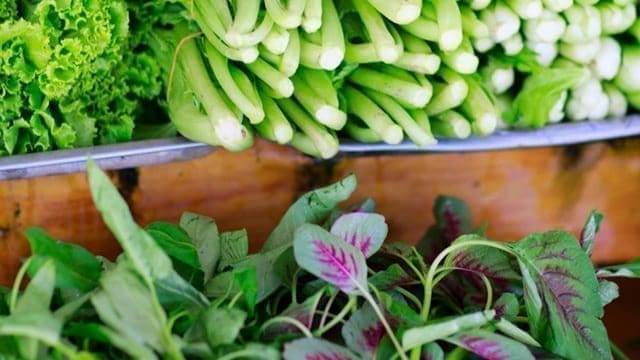NETHERLANDS – Rabobank’s World Vegetable Map 2018 has projected that a greater part of the world’s fresh and unprocessed products will continue to be consumed in the domestic market in 2018.
Despite the international trends such as the emergence of greenhouse vegetable cultivation and ‘vertical farming’ initiatives, only around 5% of all vegetables grown worldwide are exported.
A growing shift towards organically grown vegetables and the popularity of minimally processed vegetables also continues to drive this local demand.
‘Only around 5% of all vegetables grown worldwide are exported, but this percentage is increasing.
Sweet potatoes are an example of a vegetable whose popularity has risen sharply in recent years, and EU imports of this vegetable have tripled over a four-year period,’ according to Rabobank Research analyst Cindy van Rijswick.
The Dutch vegetable market has experienced significant growth as a result of the increased imports of fresh produce by the European Union contributing much to the economy of vegetable producing countries such as Mexico, Spain and the Netherlands.
In the year 2018, Rabobank expects that the market for fresh and convenient goods will continue to grow.
Although most of the vegetable products are sold fresh and unprocessed, some of it is sold as processed or preserved products as a result of freezing, canning or jarring.
A portion of it is used in animal feeds while the rest is left to waste.
The popularity of some vegetable types, that is the case of sweet potatoes in the EU, kale in the US, and broccoli worldwide based on their health benefits is expected to boost the entire market for vegetables.
The report notes that international trade has been a critical driver to the growth of the vegetables market around the world.
For example, within Europe, Spain and the Netherlands continue to provide substantial supplies of domestically grown vegetables that are consumed in the EU.
Spain and the Netherlands supplies tomatoes, sweet peppers and cucumbers, while the Netherlands supplies onions, which are exported to supplement the local demand in Africa and Southeast Asia.
The Mexican vegetables have continued to grow into the US and North American market, while Morocco benefits from access to the EU and Russian markets, and the Netherlands from the internal EU market.
Asia rising
The vegetable export market has however witnessed new geographies emerging, with the Middle East and Asia becoming significant players.
“Contrary to a decade ago, when vegetable imports were confined mainly to North America, Western Europe and Japan, we are seeing major new import markets emerging outside these markets,” said Van Rijswick, Rabobank Research analyst.
“India, China and the United Arab Emirates are a few examples of countries where vegetable imports have risen sharply in recent years.
In addition to being massive producers of vegetables – combined, they account for two-thirds of all output worldwide – India and China are also becoming more dominant in vegetable imports and exports.”











